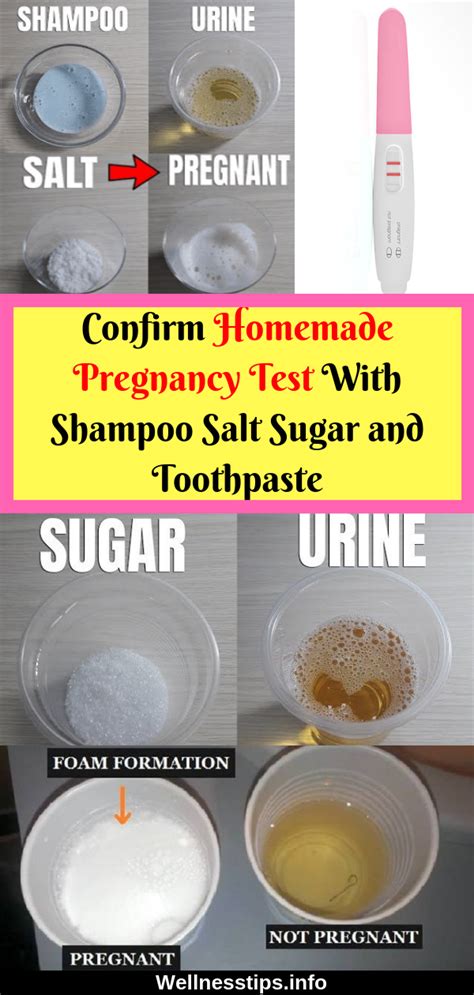
When you think you might be pregnant, the first thing you might want to do is take a pregnancy test. However, if you don't have access to a store-bought test or you don't want to spend the money, you might be wondering if there's a way to test for pregnancy at home. One method you might have heard of is using shampoo to make a homemade pregnancy test. In this article, we'll go over the steps for making and using a homemade pregnancy test with shampoo.
AIDA Structure
Before we dive into the details of making a homemade pregnancy test with shampoo, let's talk about the AIDA structure. AIDA stands for Attention, Interest, Desire, and Action, and it's a framework for creating effective marketing messages. In this case, we're using it to structure our article and engage our readers.
Attention: Why Use a Homemade Pregnancy Test?

The first step in the AIDA structure is to grab the reader's attention. In this case, we'll do that by explaining why someone might want to use a homemade pregnancy test. There are a few reasons why someone might choose to use a homemade pregnancy test:
- They don't have access to a store-bought test
- They don't want to spend the money on a store-bought test
- They prefer to use natural or DIY methods whenever possible
Whatever the reason, using a homemade pregnancy test with shampoo is a low-cost, DIY option that many people find appealing.
Interest: How to Make a Homemade Pregnancy Test with Shampoo

Now that we've got the reader's attention, we need to keep their interest by explaining how to make a homemade pregnancy test with shampoo. Here are the steps:
- Gather your supplies. You'll need a clean container, some shampoo, and a urine sample.
- Pour some shampoo into the container. The amount doesn't need to be precise, but a tablespoon or two should be enough.
- Add your urine sample to the container. The amount of urine you add should be roughly equal to the amount of shampoo you used.
- Stir the mixture thoroughly.
- Wait for a few minutes, up to 10 minutes.
- Check the results. If the mixture has turned a bluish-green color, that's a positive result. If it remains the same color, that's a negative result.
It's important to note that this method is not scientifically proven and may not be as accurate as a store-bought pregnancy test. However, some people find it to be a useful and affordable option.
Desire: Pros and Cons of Using a Homemade Pregnancy Test with Shampoo

Now that we've explained how to make a homemade pregnancy test with shampoo, we need to build desire by discussing the pros and cons of using this method. Here are some of the pros:
- Low cost - you likely already have all the supplies you need
- DIY - some people prefer to use natural or DIY methods whenever possible
- No need to leave the house - you can do this test in the comfort of your own home
However, there are also some cons to using a homemade pregnancy test with shampoo:
- Not scientifically proven - this method has not been proven to be as accurate as a store-bought pregnancy test
- Not as sensitive - this method may not detect pregnancy as early as a store-bought test
It's important to weigh the pros and cons and make an informed decision about whether this method is right for you.
Action: Should You Try a Homemade Pregnancy Test with Shampoo?

Finally, we need to encourage the reader to take action by summarizing the information we've provided and offering our recommendation. Here's what we would say:
While a homemade pregnancy test with shampoo may not be as accurate as a store-bought test, it can be a useful and affordable option for some people. If you're considering trying this method, keep in mind that it is not scientifically proven and may not be as sensitive as a store-bought test. We recommend that you use this method as a first step and follow up with a store-bought test if you get a positive result or if you have any doubts about the accuracy of the test.
Conclusion
While a homemade pregnancy test with shampoo may not be the most accurate method, it can be a useful and affordable option for some people. If you're considering trying this method, be sure to weigh the pros and cons and make an informed decision. And remember, if you have any doubts about the accuracy of the test or if you get a positive result, follow up with a store-bought test or consult with your healthcare provider.